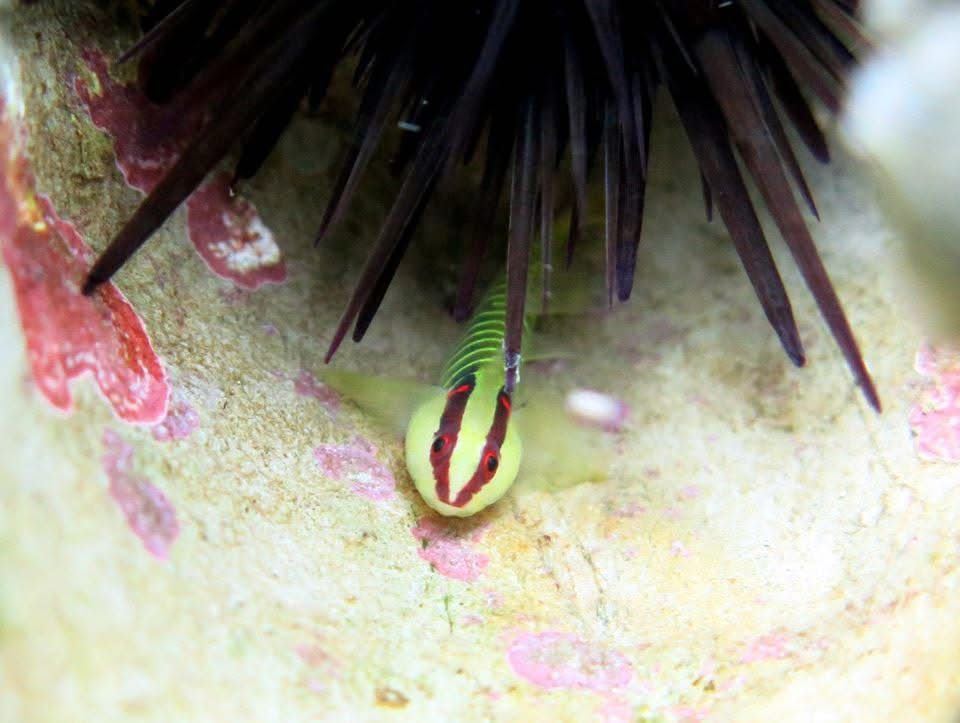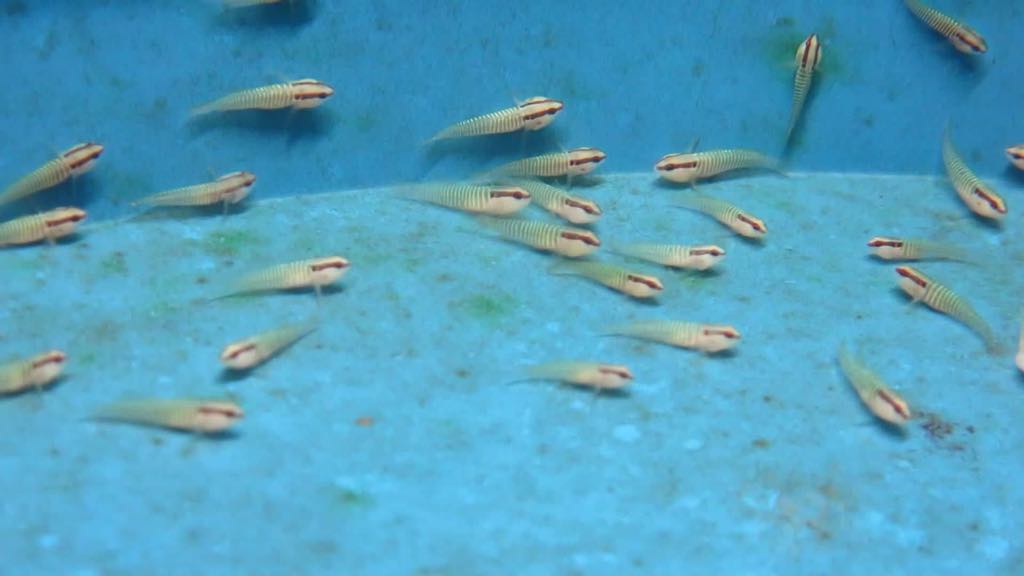
We added the Panamanian Greenbanded Goby to CORAL’s 2023 captive-bred marine fish list, but I realized we hadn’t really talked about this addition to the hobby. This species has been occasionally available through captive-breeding efforts of the team at Bocas Maricutlure, and another small batch has just settled according to founder Till Deuss.
This delightful fish is rather indistinguishable from the more commonly-known Greenbanded Goby, Tigrigobius multifasciatus. The Panamanian species, T. panamensis, is known only from the northern shore (Atlantic coast) of Panama. Based on the species description by Benjamin C. Victor in 2010, the main difference is actually a rather large genetic disparity: “Panamanian Greenbanded Gobies…show a similarly large 11.3% genetic distance from the type population.”
To make matters even more intersting, Tigrigobius rubrigenis was also described at the same time, but that species, a micro-endemic in Honduras, is more easily discerned as it has a notable additional red cheek stripe but otherwises looks similar to the other Greenbanded species.

It’s worth noting that gobies like these are naturally short-lived fishes, and can also present a breeding challenge given rather small clutch sizes and short reproductive lifespans. As a result, they require constant attention and planning to create future broodstock pairs (or refresh genetics with fresh wild broodstock). Bottom line, if we don’t buy these and keep these fishes consistently, they won’t show up routinely and as a result, could vanish from the hobby at any point if production isn’t commercially viable.
So, if you are lucky enough to come across an offer of the Panamanian Greenbanded Goby, and you’re in the market for lovely nano-fishes, I strongly encourage you to give this one a try. This is just another example of a rare species that is only in the trade due to aquaculture efforts. While wild and captive-bred version of the more commonly-available T. multifasciatus are more likely to show up, they don’t have the same unique story. If you’re really a fish-geek, then, get a fish with a fish-nerd story!
To see and learn more about the three Greenbanded goby species, you can read the species descriptions via Researchgate.
Reference
Victor, Benjamin. (2010). The Redcheek Paradox: the mismatch between genetic and phenotypic divergence among deeply divided mtDNA lineages in a coral-reef goby, with the description of two new cryptic species from the Caribbean Sea. Journal of the Ocean Science Foundation. 3. 2-16.




